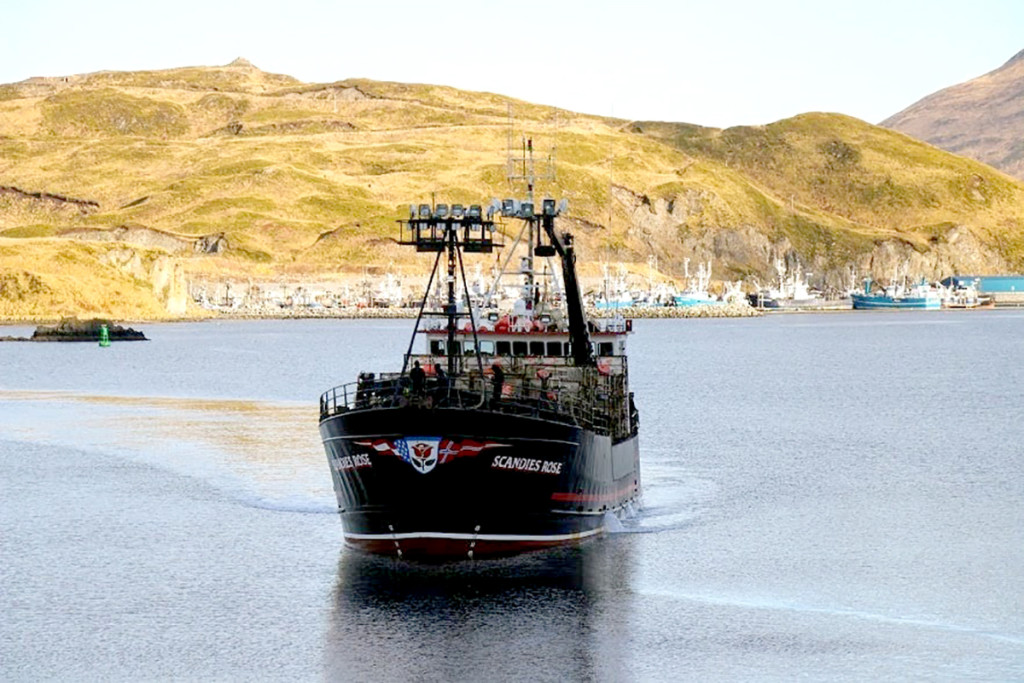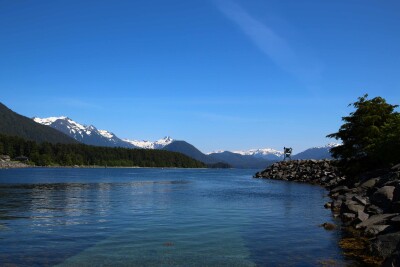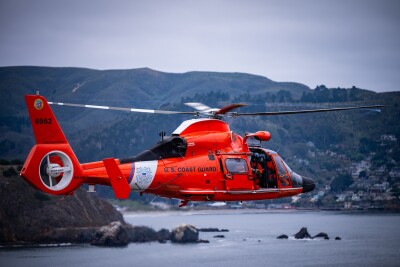The National Transportation Safety Board held a public meeting Tuesday, June 29, to determine the likely causes of the F/V Scandies Rose sinking on Dec. 31, 2019. In the meeting, board members repeatedly called out the vessel’s flawed stability instructions as well as systemic failures in weather prediction and icing calculations for the gear on deck.
Pacific Marine Expo: Conference Session After the Scandies Rose • Thursday, Nov. 18 • 1:50 • Main Stage
The 130-foot commercial fishing boat and its seven crew members had left Kodiak, Alaska, on Dec. 30, 2019, to drop pots for the federal pot-cod fishery, followed by the opilio crab season.
Five of the seven crew members were presumed lost but not recovered. Two survivors testified during the two-week U.S. Coast Guard hearings in February and March 2021, in which the NTSB participated in order to make its determinations for this report.
The stability instructions for the Scandies Rose were determined to have failed to include downflooding points on the vessel, and that they provided inaccurate descriptions of parts of the deck space.
One of the standout observations in the overview and questions during the board meeting was that icing conditions worsened in the area of Sutwik Island, where Captain Gary Cobban Jr. was headed in an attempt to seek refuge from observed sea conditions and accumulating ice in open waters.
Although the weather conditions at the nearby weather stations were accurate, they did not accurately predict the conditions observed in the area of the sinking.
One possible solution, said NTSB Meteorology Group Chairman Paul Suffern, is an experimental NOAA website that more accurately predicts freezing spray accumulations.
“None of the captains of the fishing vessels in the area interviewed at the Marine Board of Investigation public hearing were aware of the National Weather Service Ocean Prediction Center Freezing Spray website,” Suffern noted. “And [they] agreed that the graphical freezing spray information would be a useful resource when operating in areas where freezing spray was present.”
The combination of a flawed stability report, inadequate international standards for estimating ice accumulation on pot gear, and the unpredicted heavy spray conditions in the area of Sutwik Island culminated in a catastrophic scenario for the Scandies Rose, the board determined.
“The National Transportation Safety Board determines that the probable cause of the capsizing and sinking of the commercial fishing vessel Scandies Rose was the inaccurate stability instructions of the vessel,” said Brian Curtis, director of the NTSB Office of Marine Safety. “It resulted in a low margin of stability to resist capsizing, combined with heavy asymmetric ice accumulation on the vessel due to localized wind and sea conditions that were more extreme than forecasted during the accident voyage.”
Recommendations — which are not binding — include:
• That the U.S. Coast Guard conduct a study to evaluate the effects of icing, including asymmetrical accumulation on crab pots and crab pot stacks; disseminate findings of the study to the industry; and establish regulatory calculations for fishing vessels to account for the effects of icing, including asymmetrical accumulation on a crab pot or pot stacks.
• That the Coast Guard revise Title 46 Code of Federal Regulations 28.530 to require that stability instructions include the icing amounts used to calculate stability criteria.
• That the Coast Guard develop an oversight program for stability instructions of commercial fishing vessels that are not required to develop a load line certificate, for accuracy and compliance with regulations.
• That the North Pacific Fishing Vessel Owners Association notify its fleet of the dangers of icing and flawed stability requirements.
• That NOAA make an experimental website that reports more detailed icing conditions and predictions fully operational and accessible for commercial use, and that the agency increase observational resources necessary for improved forecasts in the area.
• That the Coast Guard require the use of personal locator beacons for all personnel employed on vessels in the coastal, Great Lakes and ocean service to enhance their chances of survival.
• That the Coast Guard require all owners, masters, and chief engineers of commercial fishing industry vessels to receive training and demonstrate competency in vessel stability, watertight integrity, subdivision, and use of vessel stability information regardless of plans for implementing the other training provisions of the 2010 Coast Guard Authorization Act.
The last two recommendations to the Coast Guard were noted as having already been recommended and denied. All findings and recommendations were unanimously approved by the board.
Pacific Marine Expo: Conference Session After the Scandies Rose • Thursday, Nov. 18 • 1:50 • Main Stage







